It's just comics- part 12
In the previous chapter of this endless disquisition on the subject of the 1950s ROMANCE comic book, by which it is my plan to alienate all my readers, I dwelt specifically on the product of the publisher Quality. This time I'm examining a single story at some length. It was published by Quality in August 1950. It caught my eye because the protagonist, Helen, is a magistrate. It's the only time I've ever seen such a thing in a romance comic.
 Love Confessions #6 Aug 1950, lead story, 9 pages
Love Confessions #6 Aug 1950, lead story, 9 pages
Trina Robbins in A Century Of Women Cartoonists, wrote about romance comic books: "With few exceptions, the stories in these books were hackneyed and cliched, but the art was often stylish and elegant..." The problem with that statement is that it implies that other kinds of comic book are not also hackneyed and cliched. Trina probably recognises this, but her real problem is, I would guess, the one that James Romberger spells out when reviewing the Alex Toth book I wrote about here in part 3:
First let's look at this notion, common to both quotations above, that you can separate everything else from the 'story.' There really are only a handful of story archetypes, or of romance story archetypes (and a handful of western stories, of horror, etc) and what you are reading is a performance of one of them. To draw a comparison, the tango is one dance, but every performance of it is unique (and both the archetype and the performance are a 'dance'). The tango may be different from a waltz, a quadrille or a four hand reel. As different as each performance of one of these may be from every other performance of it, each ends in its prescribed way, bar mishap. As an example, lest I'm not making myself clear, I see there is a new performance of Spiderman on film. You already know the story. Since the last time they performed it was only ten years ago, I cannot imagine that anybody half interested could not already know it.
So, the story is the abstract of how it started, who did what, and how it ended. Everything on the page, and things not on the page including the writer's instructions to the artist, comprise the performance. The story may already exist somewhere else, in a movie or in prose in a pulp or a slick magazine. Be that as it may, that's one performance and this is another. If you go and tell it later over the dinner table, then that's another performance again, and yours could be better than all the others.
Let's look at this one. I do not know who wrote it and probably never will. The lettering is by the Leroy mechanical process, but I'm thinking it wasn't put on the page pre-artwork in the EC manner, based on looking hard and comparing things. Judging by comparisons with other work not too distant in time and place I'm guessing the pencilling is by Sam Citron, an artist who earlier worked on Superman. Inking is by the 'tidy hair' inker mentioned in the previous instalment. The hair sits on the heads better here because the pencilling is superior. Here's a close up.

This is Wade, the District Attorney. That's him entering from the left in the splash panel spread showing a crucial scene from later in the story. Otherwise, here he is in the opening scene stating the argument. Is Helen to be a magistrate or a woman? And if she decides to be the latter, will she give him a tumble? She takes it under advisement.

Here she is in the courtroom being swayed by the boyish charms of a likely lad, a larrikin, a cheeky charlie.

She lets the guy off but then can't shake the thought that she did it for womanly reasons.

One of the set-pieces of the romance genre is the scene in the girl's bedroom in which she takes stock of the situation. In this scene she is invariably dressed in her smalls and is in a relaxed position. It's usually only one panel and it calls for a nicely observed figure study. There was a period when it was suggested that this is because comic artists are mostly male and they like drawing this sort of thing. That period was the one in which women weren't about to let anybody get away with anything.

So Helen reads a book to get her mind off the cheeky charlie. I'll come back to this panel before I'm done.

Next day, the crafty character invades her chambers. She tries to close the door on him, but he forces his way in.

There is authority in the drawings of Helen. We never for a minute think that the artist has imported a photographic reference. In fact he has probably used a number of stills of an actress from a single film in order to get such impeccable consistency. The challenge is to make it all look seamless.

Subtleties of body language make the difference between a good romance comic and a dull one. Notice the instinctive way she draws her arm across in front of her in the above. Another important set-piece is, of course, the clinch. This is not an easy thing to draw, and this artist shows skill in the way he has his figures coming at oblique angles to each other through, rather than across, the pictorial space. The crushed curls of hair are nicely observed. But storywise, this clinch represents a moment of panic, of danger, rather than emotional resolution.

Now she can't help herself and has been drawn into his web. In the romance comic, so much happens at close personal quarters that the artist must be on the lookout for a chance to get a full figure into a picture (see elsewhere, my 'feet rule'). He takes it here, getting out of the car, and has to extend the picture vertically at left to make it work (one of the reasons I deduce that the pages weren't pre-lettered).

Chuck takes Helen to a party, but it turns out to be the house party of a hoodlum.

Now she knows things have got out of control

She resolves to break off this association with Chuck, but next day, before she can tell him, he phones to say he's on his way round. He arrives with the whole gang in tow.

She realises too late that she has been used. There's been a hold-up and she's to be the alibi.

Suddenly there's a knock at the door. It's Wade and two detectives. She courageously identifies the villains, knowing they have guns trained on her.

All Hell breaks loose and Helen gets winged.

It's a nice touch that the piece doesn't end with an obligatory clinch, leaving the uncomfortable one above, and as presaged in the splash panel, the only one in the story. However, in the final panel Helen bows to male superiority, a 1950s thing that has all but died out in our time.

At this stage I'm thinking, you guys have gone to a lot of effort to make the protagonist of this story a very impressive figure for a comic book character, too much to leave her with that last bit of dialogue. I did not expect 'That rare woman, who has won acclaim in a man's world', to cave so easily. The 'performance' leads the reader of 2011 to expect a better resolution than the 'story' is obliged to deliver. You could delete everything after "I've been a fool" and the comic, in our eyes, would be much better for it. One could speculate that it was added in editorially; in virtually every book I've done with a big publisher there's been a line or two added in that I feel changed the meaning of something I wrote. Even The Fate Of The Artist has got a change I wasn't happy about after I discovered it (quite apart from the funny one I have talked about). It's what happens. But that's pointless speculation; the writer would presumably have wanted to sell another performance the following week. Let's just accept that he took the job and saw it through.
I kept returning to this comic (the complete thing is here, by the way at the Digital Comics Museum.), looking at it hard and thinking how easily it could have been a great piece of work rather than one that gave up at the final hurdle. Then I fastened on the seventh panel above, the one in which she is reading while lying down, the box of chocolates to one side. The book is a legal one, with the title is on the back cover. Perhaps the writer instructed the artist to make sure he got that title on there, and the artist had already composed his picture when he remembered the instruction so he stuck the title illogically on the back cover. 'Cady on Torts.'
I looked up Wikipedia. Daniel Cady was a Justice of The New York Supreme Court in the mid-1800s. He once served on a land dispute case with Abraham Lincoln. But he is perhaps best remembered for being the father of Elizabeth Cady Stanton, an important leading figure of the early Women's Rights movement. I located her autobiography at Google Books. There follows a passage from it.
Eighty years and more: reminiscences, 1915-1897. Elizabeth Cady Stanton, published by T. Fisher Unwin, 1898
(page 31)
Here's another. While I was writing the above, the episode of Two and Half Men, which I consider a very well written sitcom, in which Charlie is introduced to a lady judge came up as a repeat. Charlie tries to impress her but makes a mess of it. Three times he leaves a voice message for her. Then, having failed, he goes out on a bender. Arrested for being drunk and disorderly, he is brought before the judge, who happens to be Judge Linda. 'Please tell me you did not get yourself arrested just so you can see me?' she asks in disbelief. Charlie thinks about that for an instant and says 'ummm... you got me.' "Will the accused please approach the bench'. So he does, whereupon the judge says she'll call him and then gives Charlie a $500 fine. I mention this anecdote to show that the false dilemma is no longer cited. You can be both a judge and a woman. You can even find a soft spot for the accused without it being a betrayal of your profession. Dramatically speaking I mean. I can't guarantee you won't get hauled over the coals by the judicial conduct commission.
 Love Confessions #6 Aug 1950, lead story, 9 pages
Love Confessions #6 Aug 1950, lead story, 9 pagesTrina Robbins in A Century Of Women Cartoonists, wrote about romance comic books: "With few exceptions, the stories in these books were hackneyed and cliched, but the art was often stylish and elegant..." The problem with that statement is that it implies that other kinds of comic book are not also hackneyed and cliched. Trina probably recognises this, but her real problem is, I would guess, the one that James Romberger spells out when reviewing the Alex Toth book I wrote about here in part 3:
"the romance comics do give the artist a chance to draw a range of emotions and choreograph more intimate stagings, but they are also intended to program young girls to be subservient. In most cases, it is only that Toth drew these stories that elevates them from a justified place in the dustbin of comics history."It makes no sense to attribute a programming 'intention' to comic books when it was already being done, neither consciously nor cynically, by the state, the church and social history. A cheap commercial artifact such as a comic book can hardly have any interest in changing the world. Its only interest is in selling enough copies to come out again next month. I'll come back to the business of changing the world before I'm finished here today.
First let's look at this notion, common to both quotations above, that you can separate everything else from the 'story.' There really are only a handful of story archetypes, or of romance story archetypes (and a handful of western stories, of horror, etc) and what you are reading is a performance of one of them. To draw a comparison, the tango is one dance, but every performance of it is unique (and both the archetype and the performance are a 'dance'). The tango may be different from a waltz, a quadrille or a four hand reel. As different as each performance of one of these may be from every other performance of it, each ends in its prescribed way, bar mishap. As an example, lest I'm not making myself clear, I see there is a new performance of Spiderman on film. You already know the story. Since the last time they performed it was only ten years ago, I cannot imagine that anybody half interested could not already know it.
So, the story is the abstract of how it started, who did what, and how it ended. Everything on the page, and things not on the page including the writer's instructions to the artist, comprise the performance. The story may already exist somewhere else, in a movie or in prose in a pulp or a slick magazine. Be that as it may, that's one performance and this is another. If you go and tell it later over the dinner table, then that's another performance again, and yours could be better than all the others.
Let's look at this one. I do not know who wrote it and probably never will. The lettering is by the Leroy mechanical process, but I'm thinking it wasn't put on the page pre-artwork in the EC manner, based on looking hard and comparing things. Judging by comparisons with other work not too distant in time and place I'm guessing the pencilling is by Sam Citron, an artist who earlier worked on Superman. Inking is by the 'tidy hair' inker mentioned in the previous instalment. The hair sits on the heads better here because the pencilling is superior. Here's a close up.

This is Wade, the District Attorney. That's him entering from the left in the splash panel spread showing a crucial scene from later in the story. Otherwise, here he is in the opening scene stating the argument. Is Helen to be a magistrate or a woman? And if she decides to be the latter, will she give him a tumble? She takes it under advisement.

Here she is in the courtroom being swayed by the boyish charms of a likely lad, a larrikin, a cheeky charlie.

She lets the guy off but then can't shake the thought that she did it for womanly reasons.

One of the set-pieces of the romance genre is the scene in the girl's bedroom in which she takes stock of the situation. In this scene she is invariably dressed in her smalls and is in a relaxed position. It's usually only one panel and it calls for a nicely observed figure study. There was a period when it was suggested that this is because comic artists are mostly male and they like drawing this sort of thing. That period was the one in which women weren't about to let anybody get away with anything.

So Helen reads a book to get her mind off the cheeky charlie. I'll come back to this panel before I'm done.

Next day, the crafty character invades her chambers. She tries to close the door on him, but he forces his way in.

There is authority in the drawings of Helen. We never for a minute think that the artist has imported a photographic reference. In fact he has probably used a number of stills of an actress from a single film in order to get such impeccable consistency. The challenge is to make it all look seamless.

Subtleties of body language make the difference between a good romance comic and a dull one. Notice the instinctive way she draws her arm across in front of her in the above. Another important set-piece is, of course, the clinch. This is not an easy thing to draw, and this artist shows skill in the way he has his figures coming at oblique angles to each other through, rather than across, the pictorial space. The crushed curls of hair are nicely observed. But storywise, this clinch represents a moment of panic, of danger, rather than emotional resolution.

Now she can't help herself and has been drawn into his web. In the romance comic, so much happens at close personal quarters that the artist must be on the lookout for a chance to get a full figure into a picture (see elsewhere, my 'feet rule'). He takes it here, getting out of the car, and has to extend the picture vertically at left to make it work (one of the reasons I deduce that the pages weren't pre-lettered).

Chuck takes Helen to a party, but it turns out to be the house party of a hoodlum.

Now she knows things have got out of control

She resolves to break off this association with Chuck, but next day, before she can tell him, he phones to say he's on his way round. He arrives with the whole gang in tow.

She realises too late that she has been used. There's been a hold-up and she's to be the alibi.

Suddenly there's a knock at the door. It's Wade and two detectives. She courageously identifies the villains, knowing they have guns trained on her.

All Hell breaks loose and Helen gets winged.

It's a nice touch that the piece doesn't end with an obligatory clinch, leaving the uncomfortable one above, and as presaged in the splash panel, the only one in the story. However, in the final panel Helen bows to male superiority, a 1950s thing that has all but died out in our time.

At this stage I'm thinking, you guys have gone to a lot of effort to make the protagonist of this story a very impressive figure for a comic book character, too much to leave her with that last bit of dialogue. I did not expect 'That rare woman, who has won acclaim in a man's world', to cave so easily. The 'performance' leads the reader of 2011 to expect a better resolution than the 'story' is obliged to deliver. You could delete everything after "I've been a fool" and the comic, in our eyes, would be much better for it. One could speculate that it was added in editorially; in virtually every book I've done with a big publisher there's been a line or two added in that I feel changed the meaning of something I wrote. Even The Fate Of The Artist has got a change I wasn't happy about after I discovered it (quite apart from the funny one I have talked about). It's what happens. But that's pointless speculation; the writer would presumably have wanted to sell another performance the following week. Let's just accept that he took the job and saw it through.
I kept returning to this comic (the complete thing is here, by the way at the Digital Comics Museum.), looking at it hard and thinking how easily it could have been a great piece of work rather than one that gave up at the final hurdle. Then I fastened on the seventh panel above, the one in which she is reading while lying down, the box of chocolates to one side. The book is a legal one, with the title is on the back cover. Perhaps the writer instructed the artist to make sure he got that title on there, and the artist had already composed his picture when he remembered the instruction so he stuck the title illogically on the back cover. 'Cady on Torts.'
I looked up Wikipedia. Daniel Cady was a Justice of The New York Supreme Court in the mid-1800s. He once served on a land dispute case with Abraham Lincoln. But he is perhaps best remembered for being the father of Elizabeth Cady Stanton, an important leading figure of the early Women's Rights movement. I located her autobiography at Google Books. There follows a passage from it.
Eighty years and more: reminiscences, 1915-1897. Elizabeth Cady Stanton, published by T. Fisher Unwin, 1898
(page 31)
As my father's office joined the house, I spent there much of my time, when out of school, listening to the clients stating their cases, talking with the students, and reading the laws in regard to woman. In our Scotch neighborhood many men still retained the old feudal ideas of women and property. Fathers, at their death, would will the bulk of their property to the eldest son, with the proviso that the mother was to have a home with him. hence it was not unusual for the mother, who had brought all the property into the family, to be made an unhappy dependent on the bounty of an uncongenial daughter-in-law and a dissipated son. The tears and complaints of the women who came to my father for legal advice touched my heart and early drew my attention to the injustice and cruelty of the laws. As the practice of the law was my father's business, I could not exactly understand why he could not alleviate the sufferings of these women. So, in order to enlighten me, he would take down his books and show me the inexorable statutes.
So when, from time to time, my attention was called to these odious laws, I would mark them with a pencil, and becoming more and more convinced of the necessity of taking some active measures against these unjust provisions, I resolved to seize upon the first opportunity, when alone in the office, to cut every one of them out of the books; supposing my father and his library were the beginning and end of the law. However, this mutilation of his volumes was never accomplished...
Without letting me know that he had discovered my secret, he explained to me one evening how laws were made."When you are grown up, and able to prepare a speech," said he, "you must go down to Albany and talk to the legislators; tell them all you have seen in this office- the sufferings of these Scotchwomen, robbed of their inheritance and left dependent on their unworthy sons, and, if you can persuade them to pass new laws, the old ones will be a dead letter." Thus was the future object of my life foreshadowed and my duty plainly outlined by him who was most opposed to my public career when, in due time, I entered upon it.The writer of the comic may have just picked 'Cady' off a shelf of lawbooks. Perhaps he didn't send me to find the above, and it's all a coincidence.
Here's another. While I was writing the above, the episode of Two and Half Men, which I consider a very well written sitcom, in which Charlie is introduced to a lady judge came up as a repeat. Charlie tries to impress her but makes a mess of it. Three times he leaves a voice message for her. Then, having failed, he goes out on a bender. Arrested for being drunk and disorderly, he is brought before the judge, who happens to be Judge Linda. 'Please tell me you did not get yourself arrested just so you can see me?' she asks in disbelief. Charlie thinks about that for an instant and says 'ummm... you got me.' "Will the accused please approach the bench'. So he does, whereupon the judge says she'll call him and then gives Charlie a $500 fine. I mention this anecdote to show that the false dilemma is no longer cited. You can be both a judge and a woman. You can even find a soft spot for the accused without it being a betrayal of your profession. Dramatically speaking I mean. I can't guarantee you won't get hauled over the coals by the judicial conduct commission.
Labels: It's just comics 3
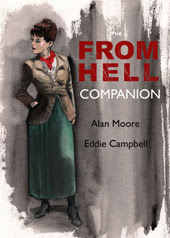


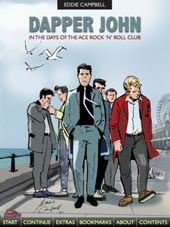
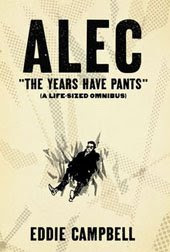
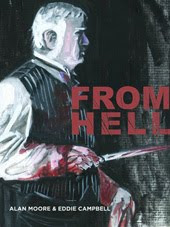
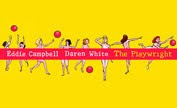
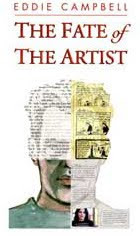
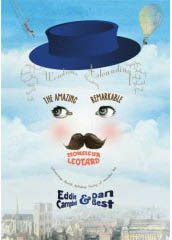





11 Comments:
That's really good, though the mention of 'Tort' could also be an intentional (or felicitous) piece of foreshadowing, in regard to civil duties and responsiblities.
Interesting links? The V. van Gogh shot by a kid in a cowboy costume? Vinny teased him by calling 'Wild Bill' and the kid plugged him? Which means everyone in 1890 France had a common background and knowledge of cowboys. Pulp cowboys novels in French that James Thurber wrote about in his reminiscences 'The French Far West'.
Hi Eddie, in no way did I mean to imply that the romance comics were trying to "change the world", no, they were only one of a host of influences that combine to express the same message to women, that they must be subservient or submissive to men...and although the Standard stories seem so removed in time, things have not changed so much. On TV the other night, in just one commercial break I counted 3 ads that showed women cleaning their houses and serving the males in their families. Comics books are just one facet of a culture-wide pattern of programming.
Thanks for giving the Leroy lettering style a name, something you also find in books and magazines from the the early 20th century on. I always thought of it as "stencil lettering" but wasn't aware there was a particular (and patented) mechanical process involved.
"That period was the one in which women weren't about to let anybody get away with anything."
Line like that and you won't lose this reader...
James,
Either I jumped too quickly between ideas or you went into a panic (Oh no, Eddie Campbell's criticizing me) and read that part too quickly. I certainly didn't mean that you implied that comics were trying to change anything. They were not even 'intending' anything. You said they were 'intended to program'. I argued that the only intention was to sell copies. Anything else was unintentional. And to expect more of them is asking too much. To question women's position in the world would be asking too much. It would be asking them to 'change the world.'
'It's just comics'
Eddie
John C, Steve, Thanks for commenting. and h.n. is referring to my post of 17 October
I was talking about comic books in the years 1950-55, if that wasn't clear. I have no thoughts about the comic books of today, except keep them away from me.
Anybody following the remarks about Leroy lettering that John referred to, here's a link:
http://www.prc68.com/I/Leroy.shtml
here's another:
http://www.tpub.com/engbas/3-35.htm
between the two links you should get an idea of how it worked.
No panic, but it seems that comics are let off the hook for their part in the culturewide programming. The editors direct certain types of proscribed outcomes for the stories...if you think not, try suggesting more progressive plot amendments in a script sometime.
The stories in the Toth book are simply a prime example of the type of sexist hogwash that permeates media then and now. If you think things have changed much, think again. Even when efforts are made to address these issues, some readers might not see what is in front of them, since they are programmed as well. Witness the recent argument on the Hooded Utilitarian about the rape scene in Watchmen; quite a few commentors were under the impression that it wasn't rape because it was "interupted", never mind the obvious assault and battery and the barely obscured sodomy. One would hope none of them are called for jury duty in a rape case.
For an example later than 1054 and beyond the romance genre, when Kirby in his plotting and drawing of complete stories for the FF at Marvel would attempt to give the "Invisible Girl" (the name says it all)a more proactive role, he would run afoul of Stan Lee who would overwrite and strip the story of Jack's intent, force Jack to redraw the scenes without Sue or direct the inker to erase her and voila, she was invisible but without the dotted lines, back behind the scenes to the kitchen or nursery or what have you, to worry ineffectually. Now, of course, we have plenty of female characters who "kick ass" etc, but that is as far as it goes....that's what passes for feminism in the largely homosocial mainstream comics community.
Sorry, I don't want to write reams in your comments....rereading your piece I see what you are saying, perhaps the programming is "unintentional" but I think only because it was/is standard operating procedure across the board, not just in comics but everywhere.
We have moved forward---only in increments, but for some reason a panel you drew comes to my mind, very early on in From Hell where a prostitute nonchalantly straddles a guy and puts him inside her. The way she does this and the angle you drew it from is jarring for its straightforward but somewhat distanced naturalism. That's a long way from those Standard stories.
James,
Thanks for commenting.
While the world of any period has its share of jerks and people who didn't do what they promised to do, I feel that you characterize the world of 'yesterday' as one in which women bravely bore their burden of oppression. But if you ask old ladies to list their complaints, they are more likely to say that today you can't go out and leave your door open, or that young men do not have the manners they had back in the day, and how a young man would always wear a coat and tie when he went out, and people didn't dress badly just because it's Friday, and how popular music was so much better in the 1930s or 1940s (I would have to agree with them), how you could listen to it and dance to it and appreciate the poetry of the great songwriters, and films were not about 'franchises,' and magazines were full of stories and beautiful illustrations. The world also had its share of upstanding guys who worked hard to support a family, and women who were happy to cultivate their home and proudly dress their children, play the piano, and prepare dinner for the man whose obligation it was to sit in a dreary spirit-crushing office all day wearing out his eyesight on matters of no personal importance to him.
It all depends on how you look at it.
I guess what I am on about has been going on forever. But as you say, it depends on one's vantage point, and as well on which of the elderly one talks to. Anyway your response is a charming evocation of simpler times which reminds me of Toth's later longings. You might enjoy the spiral bound book of Toth's letters to Irwin Hasen, which can be had from Hasen if he still has any left.
Post a Comment
Subscribe to Post Comments [Atom]
<< Home